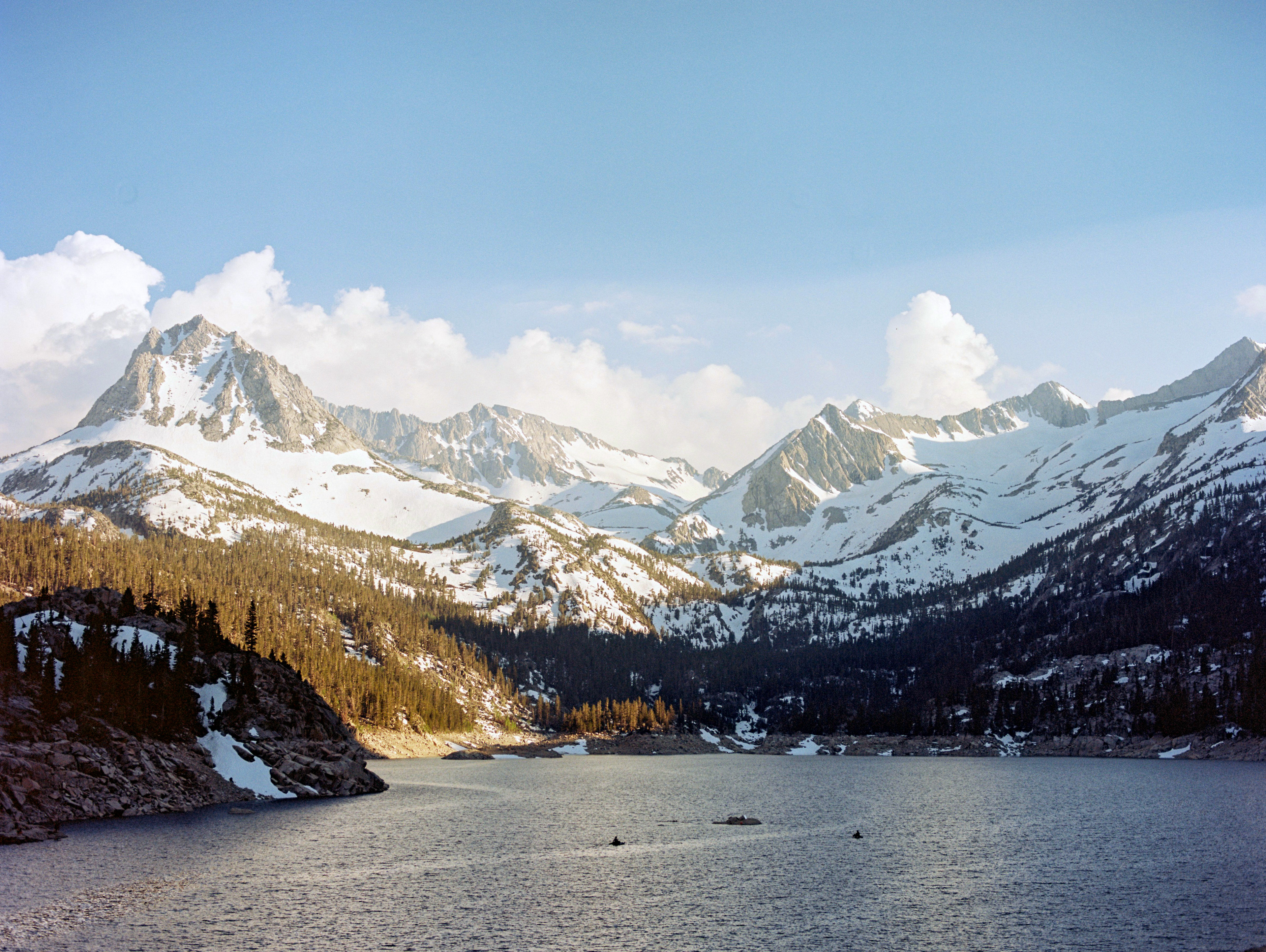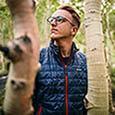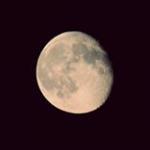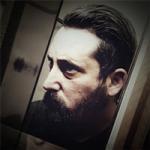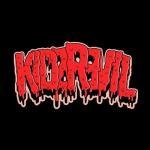-
Posts
34 -
Joined
-
Last visited
Reputation Activity
-
 pryde reacted to Parker in NX1 Extended Dynamic Range? New Settings.
pryde reacted to Parker in NX1 Extended Dynamic Range? New Settings.
Here's a quick little spot I shot for a local restaurant's facebook cover yesterday, very quick turnaround because those Sammy colors are so gorgeous! This is basically right out of camera, only a tiny bit of tweaking on a few shots. Normal gamma, color sliders at 1.99, sharpness -10, contrast -4, saturation -2, on both the NX1 and NX500 (the only difference being the master black level on the NX1 was at 15 and obviously the NX500 doesn't have this setting). While this isn't showcasing of increased dynamic range per say, I do really like the way it came out looking.
password is jacks
-
 pryde got a reaction from MountneerMan in NX1 Extended Dynamic Range? New Settings.
pryde got a reaction from MountneerMan in NX1 Extended Dynamic Range? New Settings.
Really excited for the potential here. I'm going to keep playing with variations on settings, but just doing a quick clip at my desk showed some nasty macroblocking in the shadows that I haven't seen since before I started using the bitrate hack. Can't imagine how bad they'd be if the bitrate was standard. The video shows the same clip OOC and with a basic lut. I think I'm going to play around with RGB values around 1.50 next. Or maybe this is a Master Black Level issue. I generally only shoot with it at +5 and in Gamma DR.
Settings:
RGB all 1.99
Gamma Control Normal contrast -5, sharpness -10, saturation -1
MB level +15
Bitrate Hack: 140 mbps
Lens: 16-50 @ f/2.0 on wide shot, f/2.8 tight
iso 1600, 1/50th, UHD
-
 pryde reacted to Arikhan in NX1 RAW VIDEO???
pryde reacted to Arikhan in NX1 RAW VIDEO???
Thanks. It was you @Andrew Reid who made me to buy this camera years ago. It was specially the Lisbon video...You were one of the guys not wining and criticizing the H265 (at that time not such popular in this industry), but encouraging people to give this camera a try. Thanks a lot.
Andrew, just give me some time to work on this...I tried to explain a few things and got provoked and insulted - because people probably not understandung what I mean. I'd like to share the work first...Above this, there are some serious legal aspects to consider - and there is no answer yet from a lawyer society specialized in this issues...
When this is done, I will share the RAW footage for evaluation. Please consider, I am a one man band when working on this - and got a live with many friends, family, sports, shootings, etc. After university-entrance diploma examinations, I will have some more time to spend on it.
Be assured, I'll share my results here.
BTW: Zero interest in financial compensation when working on this.
-
 pryde reacted to Arikhan in NX1 RAW VIDEO???
pryde reacted to Arikhan in NX1 RAW VIDEO???
@kidzrevil + @lucabutera
Here is a screenshot from an early release.
UHD | 25fps | 1/50 | Manual WB (blue hour like human eye sees it) | Zeiss O 28mm 1.4 at F7.1 | edit in post: slight WB correction | File edited with Premiere CC | Workflow recommended by @Mattias Burling --> here <--
-
 pryde got a reaction from Marco Tecno in NX2 rumors
pryde got a reaction from Marco Tecno in NX2 rumors
I would say 4k raw would definitely double the horsepower of the nx1 for my purposes, as long as the workflow isn't entirely unreasonable.
The difference in quality can be experienced by shooting a timelapse with raw photos and comparing that to a hyperlapse shot in h265. The color depth and malleability just doesn't compare.
I'm not throwing shade at the nx1's video quality (i still use it regularly after all), I'm just saying usable 4k raw video would put the camera in another league altogether.
-
 pryde reacted to Matthew Hartman in NX2 rumors
pryde reacted to Matthew Hartman in NX2 rumors
Some shade isn't completely unwarranted. As powerful as HEVC is over h.264, it's still a lossy distribution codec at the end of the day, in 8bit no less. If more can be drawn out of the camera, that's a win in my book. Of course, it will depend on the workflow and reliability. I'm sure some here are willing to meet those requirements.
-
 pryde got a reaction from Juxx989 in NX2 rumors
pryde got a reaction from Juxx989 in NX2 rumors
I would say 4k raw would definitely double the horsepower of the nx1 for my purposes, as long as the workflow isn't entirely unreasonable.
The difference in quality can be experienced by shooting a timelapse with raw photos and comparing that to a hyperlapse shot in h265. The color depth and malleability just doesn't compare.
I'm not throwing shade at the nx1's video quality (i still use it regularly after all), I'm just saying usable 4k raw video would put the camera in another league altogether.
-
 pryde got a reaction from pablogs86 in NX1 How to deal with white balance?
pryde got a reaction from pablogs86 in NX1 How to deal with white balance?
Same as the others, I'm either using the daylight preset or custom WB. Really wished Kelvin worked.
I previously used a gray card as well, but i recently bought a white balance disc that you shoot through similar to an Expodisc. It works well, it's just obnoxious to carry around.
I need to start using Matthew's technique and shooting a white card so I can make sure it's nailed when editing.
-
 pryde reacted to Matthew Hartman in NX1 How to deal with white balance?
pryde reacted to Matthew Hartman in NX1 How to deal with white balance?
It really does come in handy. You can always just use a sheet of white printer paper, or the white part of a clapper board. Anything as close to pure white will get you a decent WB and bring you along to about 95% nailed in camera. Besides, the NX1 does a decent job with skin tones as it is.
You can of course get calibrated color charts (for a premium) and bring that into Resolve if you want to get strict color accuracy, but I'm not that analytical with my color, and I try to steer away from mixing/shooting different camera brands.
-
 pryde got a reaction from Matthew Hartman in NX1 How to deal with white balance?
pryde got a reaction from Matthew Hartman in NX1 How to deal with white balance?
Same as the others, I'm either using the daylight preset or custom WB. Really wished Kelvin worked.
I previously used a gray card as well, but i recently bought a white balance disc that you shoot through similar to an Expodisc. It works well, it's just obnoxious to carry around.
I need to start using Matthew's technique and shooting a white card so I can make sure it's nailed when editing.
-
 pryde got a reaction from kidzrevil in Anyone shooting vertical video? (deliberately ;) )
pryde got a reaction from kidzrevil in Anyone shooting vertical video? (deliberately ;) )
I shoot vertical video when creating content that is specifically aimed for social media (either instagram or Facebook).
I did a series of videos for the San Diego Chargers, and after doing a couple square videos and traditional widescreen 16:9, the square ones got more interaction on Facebook.
I find this to be the same case on Instagram, where a vertical video takes up more real estate in the feed and thus demands more attention. For Instagram feeds though, video can only be 5:4 not 16:9. or you can go square of course.
Several people I follow have gone from shooting standard youtube vlogs to shooting just for Instagram stories, and walk around with vlog setups but have the camera vertical (https://www.instagram.com/jessedriftwood/ probably being the best example). I've shot a couple videos like this while on trips and some commissioned work for music festivals, but it's just kind of a bummer that all the footage can only be used for one specific purpose. It obviously looks awful if you try to share vertical video anywhere on the web.
-
 pryde reacted to Brother in Canon M50 mirrorless camera features 4K video
pryde reacted to Brother in Canon M50 mirrorless camera features 4K video
Toot, toot! All aboard the hype train! Final destination, disappointment junction! I hope they prove me wrong though
-
 pryde reacted to ReinisK in NX1 Flat image, closer to C-Log
pryde reacted to ReinisK in NX1 Flat image, closer to C-Log
Exactly what Happy Daze said. The blacks ar not crushed, Premiere Pro is just viewing the footage that way.
To get rid of this, select the 16-235 luminance setting in camera, not 0-255.
If I remember correctly, the easiest way to get Premiere to 'see' the blacks (and also highlights, which are shown as blown-out, but actually aren't), would be to set output values in fast color corrector to 16 for blacks and 235 for highlights. You could also use RGB curve and lift the left end (blacks) and lower the right end of the curve (whites), while keeping the curve line straight.
As to getting flatter image - I see you're using normal gamma with -4 contrast. Gamma DR with the same settings would definitely be flatter. Black level adjustment though, also gives flatter image, but I don't use it.
When I plan to grade the footage, I use Gamma DR, -5 contrast and -2 saturation. With -10 contrast the image can get weird, and you have to perfectly nail WB, to not get weird colors.
-

-
 pryde reacted to keessie65 in The Bolex-Anamorphot 16/32/1.5x thread
pryde reacted to keessie65 in The Bolex-Anamorphot 16/32/1.5x thread
Recently I did a test with the Bolex 16/32/1.5x, HCDNA, Ultron 40mm and Samsung NX1.
-
 pryde reacted to HockeyFan12 in How to Take Advantage of Our Entirely Saturated Market and Make Money
pryde reacted to HockeyFan12 in How to Take Advantage of Our Entirely Saturated Market and Make Money
Eep, I’m not sure exactly what to write. A lot of this is on a case-by-case basis.
A few things I’ve found useful for corporate work are:
When shooting talking heads, light primarily with an offside 3/4 book light close to camera that serves as both eye light and key and then put some negative fill on the other side of the face just off-camera. That way you can get both soft light and contrast and dial in any skin correction in post or with a promist filter. If you do choose to use a fill light (a hair light, diffused of course, could also help) keep it very soft and from camera direction, not 180º away from the key, to maintain shape. Keep both lights approximately at camera height to avoid raccoon eyes.
Overlighting is fine... if you're then removing light–doing the HMI through every window thing or Kino Flo in every corner and then turning off or dimming anything that’s behind the camera so you’re always working with a backlit scene or an offside key. I spoke extensively with Phil Abraham about how he lit the Sopranos and the approach to many interiors was rather DIY. On sets they had huge banks of dozens if not hundreds of 60w incandescent lights above the stage (facing 40º down toward the talent) that functioned as soft backlights and offside keys. Each corner of the room had one pointed toward the middle of the room. Only the lights in front of the camera were turned on. Anything behind the camera was turned off. Of course, there were also practicals and bounce cards for fill. When they turned around, they’d just flip which lights were on and which were off so it was always backlit/side-lit. At least that was the basic approach that was fined tuned with smaller units. That's for the interior sets but you can use the same techniques on locations with high ceilings.
You can do the same thing even in a corporate setting even for b roll even when you see the ceilings. Cameras are so sensitive these days and color correction so powerful that lighting with practicals is fine. Say you have a room being lit with overhead fluorescent lights. If you want some shape to the room, just use the switches in the room or flags or trash bags or whatever to turn off or flag off all the lights behind the camera. Then you’ll get the natural light working as a soft offside key. If you want to light talent standing in front of that so that their faces aren't dim, just use the same principles as the book light/negative fill combo (maybe a lone LED heavily diffused and as close to the talent as you can bring it, dimmed down a lot, and then negative fill on the other side just off camera). Bring CTO/CTB and plus and minus green to match the LED to the practical lights.
Remember, the softness of the light correlates with its perceived size by the subject. A 4’x4’ light at 4 feet will be as soft as a 1’x1’ light at one foot (though the falloff will be quite different). One good trick to get a DIY book light for interviews is to first take a 1x1 LED panel and diffuse it with a piece of 216. And then gel it to match the color temperature of the space. Set is aside. Then take a c-stand and hang a 4’x4’ piece of diffusion (I like 216 or half grid cloth) and bring that wherever you’d want your book light to be. This will be the front of your “DIY” book light. You can easily hang 4’x4’ diffusion that functions just like a 4’x4’ frame just by keeping cuts of it around rolled up in a trash can or box and then extending the c stand's gobo arm so it's parallel with the floor and raising it up and then hanging the cut of diff from number 2 clamps at the top corners. You’ll have to weigh down the bottom corners with a clamp at each corner, too (number 2 clamps). Then position the LED behind the DIY frame and use barn doors to reduce spill (a true book light would have a tent of flags around it, but that’s slow) and turn it on. Move the light until the LED is just far enough to evenly illuminate the 4’x4’ frame. Then dim the LED to adjust brightness. Quick and easy book light and you can store that all in a small car.
Don’t be afraid to use flags and nets. If you’re using soft light, just bring flags. You can dim soft light with solid flags and it won't change the shape too much.
Buy lights and play with them. Learn on set, but just shoot stuff for fun whenever you want to try a new technique.
For narrative, if not storyboarding then at least defining the axis of action clearly can help. As far in advance as possible. Because this will let you place your key light for most of the scene (in theory). My friend who worked with Deakins described his approach as being too time-intensive to replicate on an indie scale, so I won’t bother describing it. One approach he really liked that can be replicated on a small scale is Elswit’s. He would often have a hard key light or back light 3/4 to camera then carry that with a much softer source that blended into it in terms of color temperature and direction, maybe 45º or less rotated toward camera. So he could get a lot of contrast in a scene and always get an exposure on the face by sort of modifying the Ridley Scott Blade Runner look of using a single source, but then sort of softening that source by using it to motived the fill. Filling from key direction, not from the opposite side. (But still tweaking with bounce boards etc. for the close ups).
That also lets you do fewer light changes between set ups if you basically only have one direction where the lights are visible and you can’t point the camera. Then you can use a common technique for exteriors and cheat your close ups by rotating the actors rather than moving the lights. This technique is of course great for day exteriors. Shoot with the sun behind you. Rotate actors a bit so the backlight then becomes an offside key for their CUs. You can use bounce cards etc. too. If there’s not too much wind and you’re shooting really close like CU or XCU or something, you can do the c stand trick to hang a weaker diffusion (251 or something) between the subject and the sun to soften the sun light a bit.
Or for overcast days, bounce light using a 4x4 bead board silver side (or silver reflector) to create a subtle offside key and use negative fill camera side, for instance, to shape the key further. Or bring a battery-powered LED with you.
Scout. Mirror boards are brighter than 18k HMIs. They’re fairly expensive to buy and heavy as hell, but on an indie budget they’re very affordable. Bounce one of those through a window and move it. Maybe put some diffusion against the window. Easy way to get a cheap big gun in day interiors. But you need to time things up so the sun is in the right approximate place.
So always scout the sun path for day exteriors and even interiors if you have time. There are apps like Helios that help. That can save you money. But of course if you’re not set on shooting in one direction or the other you can follow the same principles on the fly.
I dunno, that’s about it. Also, when in doubt, diffuse your light. Especially lights behind the camera. I like hard light but if I see more than one hard shadow on a wall I know someone screwed up. One hard light is usually enough, but since so few people use hard light these days it can be cool.
Oh, and look for darker walls to shoot against. White walls make lighting so much harder.
-

-
 pryde got a reaction from Pavel Mašek in Max bitrates and does the NX1 hack actually reduce macro blocking?
pryde got a reaction from Pavel Mašek in Max bitrates and does the NX1 hack actually reduce macro blocking?
I use the Lexar 2000x 300MB/s UHS-II and the Sandisk Extreme Pro 95 MB/s which also works just fine for me. Plus it's cheaper.
I generally shoot at 160 Mbit/s or 140 with audio and it is completely reliable. I'll leave it going for 30-40 minutes during wedding ceremonies.
I was having a lot of issues with macro blocking in shadows and backgrounds with uniform color with the standard bitrates, but the hack completely eliminated those problems for me.
The bitrate hack + Luca's NX-L redeemed the NX1 for me. I've been shooting it in tandem with the GH5 lately and the footage is actually matching pretty well for me.
-
 pryde reacted to ricardo_sousa11 in Samsung NX1 - Post Your Latest Video
pryde reacted to ricardo_sousa11 in Samsung NX1 - Post Your Latest Video
Heres my latest entries :
This last one is still private, its only due next week, but since this is a specialty forum, there should be no harm. Everything shot on the NX1+16-50s 2.8, and graded with my own Vellichor luts, available for purchase here if any of you wants to have a look - https://sellfy.com/p/HNAk/
Hope you guys enjoy :D
-


